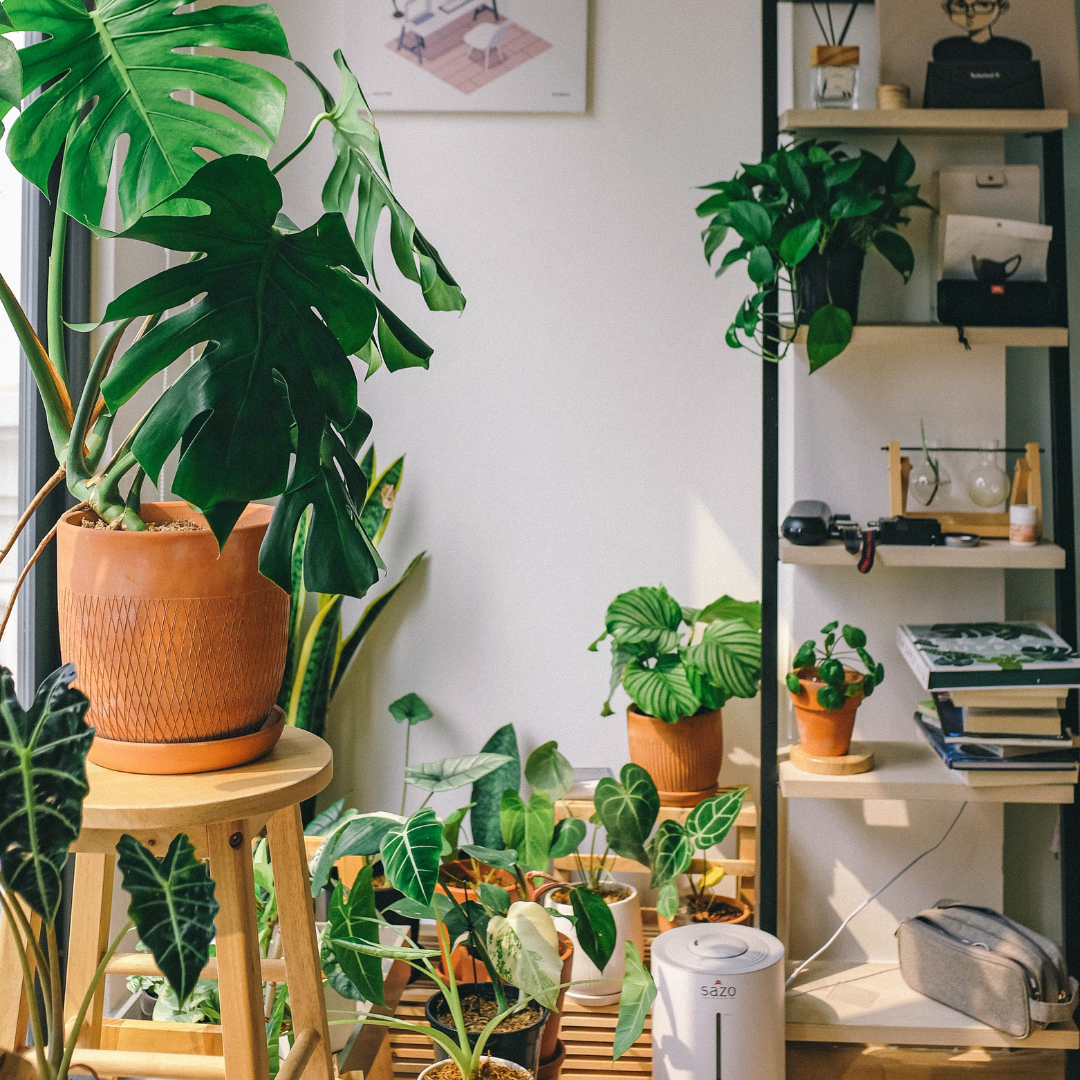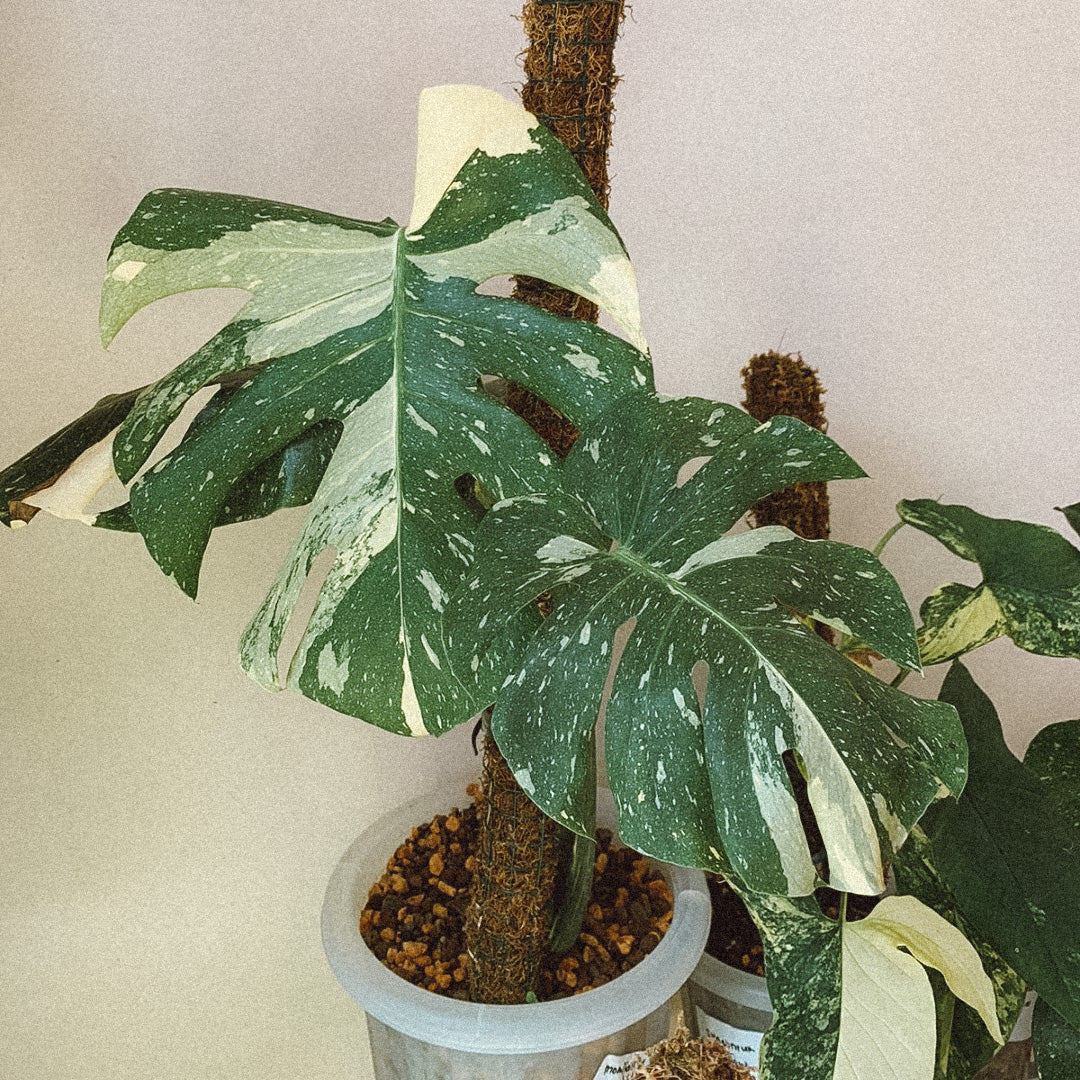
Tips and Tricks for Fall Plant Care
September is here, and fall’s coming. The weather is about to change, and with that, us plant parents have some new hurdles to get through. But don’t worry, with a few adjustments, your plants will be able to live through the fall and winter months just fine. If you’re a new plant parent or just need a refresher on what to do when fall comes, check out these tips on how to best take care of your plants this fall.

Adjust Light
One thing to keep in mind with the changing seasons is changes in light levels. With fall coming up, days are starting to get shorter and on top of that, fall weather tends to be cloudier and lets less light through during the day. This means that it’s important to keep an eye out for signs your plants aren’t getting enough light including:
- Branches or stems growing skinny and leaves far apart
- Leaves growing pale
- Plants leaning towards their light source
If you do notice any of these signs, consider moving your plant closer to the window, try rotating the plant, or try cleaning the dust off of the leaves for maximum absorption. If it’s a particularly dark spring, a grow light is a good workaround for this lack of light
Temperature
With fall weather coming, we’re all getting ready to go out with our jackets on and cozy up by the fireplace. While we all prepare for colder temperatures in our day-to-day life, we should also consider getting our plants ready as well.
The first thing that you should do to get your plants ready for fall is to start by taking your outdoor plants inside. Doing this will allow you to have your plants in a place where they aren’t exposed to harsh temperatures and are in a well-regulated space. However, it’s important to make sure you don’t put your plants too close to window panes or vents since window panes can expose your plants to extremely cold temperatures and vents, dry air.

While moving your plants inside is good for temperature regulation, outdoor air is often more humid than indoor air. For this reason, any plant parent should keep an especially keen eye on the moisture of the soil, consider misting their plant or buy a humidifier.
Watering Schedule
Keeping your plants watered and happy is easy once you get your schedule down, but with less light and lower temperatures coming this fall, you’re going to have to alter this schedule.
When looking at how often to water your plants, the best practice is to get an idea of how moist the soil is, and water as often as you need to maintain that moisture level. However, with lower temperatures and less light, the soil will end up drying out slower. So keep an eye on the moisture levels before watering and consider watering less during the fall and winter months.

Fertilizer
While your plants are growing, it’s important to support them with the nutrients they need. We do this with fertilizers that replenish the nutrients in the soil to be absorbed by their roots. However, the majority of plants go into hibernation during the fall and winter months and stop growing.
For this reason, it’s best to stop fertilizing your plants during their dormant months. With a few searches online, you can check if your plant goes dormant or you could keep an eye out for growth and fertilize when you notice new leavers of stems. If you do have plants that grow in the fall, click here for our pick for the best liquid fertilizer we've used.
Pruning
When bringing your plants inside for the colder months, it’s common that some of their leaves will yellow or die. This is completely normal as your outdoor plant needs to get used to a sudden change in light and temperature levels. The best thing to do in this situation is to keep an eye on the plant and cut out some of the yellowing and dead leaves.

All in all, the best thing you can do is to keep an eye on your plants. Take a picture every few days so you can see how your plants change over time. Don’t be afraid to try new things, raising plants is a trial and error process and experimenting and learning is the best way to move forward. But if you're still worried about raising plants during the fall and winter months, check out these hard to kill plants or air plants that have the look of normal plants without the need for maintenance.


